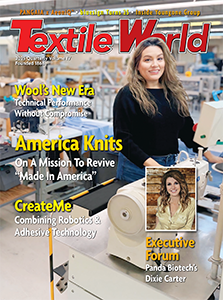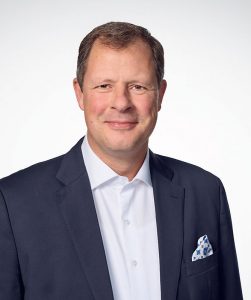
In an exclusive interview as Rieter reaches its 230th anniversary, Chairman and CEO Thomas Oetterli spoke with Textile World about leadership, technology, and the future of spinning.
TW Special Report
The global textile industry has few machinery and technology brands as well known and rooted as Rieter, a brand synonymous with yarn spinning technology and pioneering textile innovations.
This year marks Rieter’s 230th anniversary as a company serving the industry — a company with humble beginnings as a trading company dealing in spices and cotton.
Founded April 15, 1795, when Johann Jacob Rieter established J.J. Rieter & Cie. in Winterthur, Switzerland, the company soon become proficient at yarn spinning and textile manufacturing processes in the early days of textile’s industrialization — a key time in the development of mass production.
Rieter is well known for its focus on engineering and the development of comprehensive textile manufacturing solutions.
In 1891, Rieter converted into a stock company bolstering its trajectory as a leader in equipping the advancing industry.
As the company notes while recounting its history: “Despite economic challenges, Rieter has always used times of crisis as an opportunity to increase its efficiency and hone its strategic focus. Along with its subsidiaries Accotex, Bräcker, Graf, Novibra, Suessen, SSM, and Temco, today Rieter is distinctive and well-known in the market.”
Rieter focuses its approximately 4,500 employees worldwide on innovation, automation, digitalization, and the goal to “fully automate the value creation process of spinning mills by 2027.”
A lofty goal, yes, but one that is not beyond Rieter’s reach.
Recently Rieter CEO Thomas Oetterli sat down with TW to share some of the challenges of leadership, technology and the future of spinning.
TW: Mr. Oetterli, you have held several executive positions with significant Switzerland-based companies. How did those experiences prepare you for your CEO role at Rieter beginning in 2023?
Oetterli: Prior to joining Rieter, I was CEO of Schindler, a leading global player in the elevator and escalator industry, where I navigated the pandemic and the disruption of global supply chains. This taught me a valuable lesson: success requires a clear vision, mission, and strategy. As CEO of Rieter, I have worked together with our leadership team to articulate these clearly for the company so we can all work toward the same goal: Ensuring that Rieter’s cutting-edge technology strengthens and advances every spinning mill worldwide.
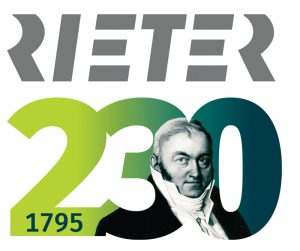
TW: What surprised you most about Rieter in your leadership role for the last two and a half years?
Oetterli: Rieter’s company culture is one of a kind. The drive and passion of our people are second to none. Our employees live for customer success. This is what gives our storied brand its enduring strength. And it is what keeps us ahead!
TW: Having experiences in other industries, what do you find unique about the textile industry?
Oetterli: The cyclicality of the business is unique. Agility is therefore a key driver of our success and a core element of our strategy. This is why we have relocated production and research and development closer to customers, sharpening customer-centricity, accelerating the speed of product development, and improving agility.
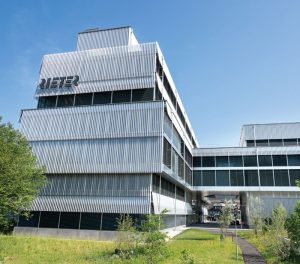
TW: As Rieter celebrates its 230th anniversary, are there any significant events, decisions or a corporate direction that will shape the company going forward?
Oetterli: Throughout its history, Rieter has been synonymous with pioneering innovations.
Some of our world-firsts include the introduction of compact spinning, the launch of a card with the largest active carding area and ROBOspin, the industry’s first fully automated piecing robot. Our new Campus in Winterthur, Switzerland, houses the most modern innovation and technology center of its kind, combining Rieter’s extensive know-how and long-standing experience under one roof.
And the best is yet to come! We are now developing a prototype of a fully autonomous mill which we plan to showcase at ITMA 2027 in Hannover, Germany.
TW: What is the vision for Rieter under your leadership, and what is your underlying attitude for expanding on the company’s 230-year legacy?
Oetterli: The future of spinning is automated, digital, and smart. As mills struggle to hire and retain workers, automation technology is essential in order to ensure consistent and efficient operations. We are stepping up research and development activities to fully automate the value stream by 2027 through autonomous transport systems and collaborative robotics. Rieter’s digital spinning suite ESSENTIAL will be the command-and-control center of smart and high-performing mills that lower cost and maximize returns. Customers will be able to fully focus on their yarn business by outsourcing their operations to Rieter technology and expertise.

Growing The Company
TW: Rieter’s most recent acquisition has made headlines. Can you describe Rieter’s path of acquisitions during your tenure, the thought behind purchases and how they fit into your vision for the company?
Oetterli: As fiber consumption is projected to rise, most of the growth is expected to come from man-made fibers. The increase of natural fibers such as cotton and linen is limited due to natural boundaries. Man-made fibers will help to meet expanding demand for clothing, technical and home textiles. In May, we announced the strategic acquisition of Barmag, which will transform Rieter into a leading supplier for converting natural and man-made fibers into yarn. Subject to regulatory approval, we expect the transaction to close before the end of the year.
Barmag is a provider of filament spinning systems used for manufacturing man-made fibers, texturing machines, bulked continuous filament (BCF) systems, staple fiber spinning and nonwovens solutions and — as an engineering services provider — offers solutions along the textile value chain. The transaction is fully in-line with our strategy and follows previous acquisitions, where we complemented our portfolio in short-staple fiber machinery and expanded our foot-print in components and machinery for man-made fiber production. The acquisition will further enhance Rieter’s position in the important Asia-Pacific region and provide access to Barmag’s filament expertise, which will help to further scale Rieter’s own capabilities and improve digitization solutions and product sustainability.
We are very proud to welcome Barmag to Rieter. We are convinced that this combination will form a market leader in the textile industry which will create value for our shareholders, customers, and employees.
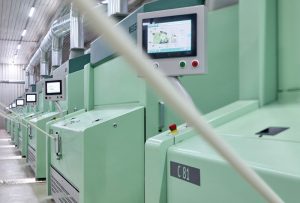
Forward-Looking Thoughts
TW: Forward-looking questions are always difficult to ask a leader of a large publicly traded company, but what can you share about your views on the global textile industry?
Oetterli: Spinning mills around the world struggle to recruit and retain skilled workers. This is part of a larger trend in manufacturing, which faces a severe labor shortage amid a changing workforce. Rieter’s automation technology enables mills to turn this crisis into opportunity by helping to ensure consistent yarn quality, higher output, and greater resource efficiency — thus improving the economic efficiency of spinning mills. Rieter’s fully automated piecing robot ROBOspin is a case in point: Each week in spinning mills across the globe, this pioneering machine pieces more than 1,000,000 yarn breaks, resulting in a reduction of about 2,000 working hours for operators.
TW: What significant events do you think may alter the trajectory of the global textile industry in terms of growth, technology shifts and prevailing trends?
Oetterli: Digitization is transforming production processes in every industry, driven by the Internet of Things and Artificial Intelligence (AI). The potential for the spinning industry is huge and Rieter is working to achieve its vision of a fully digitized mill. ESSENTIAL — the Rieter Digital Spinning Suite — is a steppingstone toward the fully digitized mill as it provides spinning operations with real-time data streams and key performance indicators along with improvement suggestions for efficiency, production, energy, and quality.
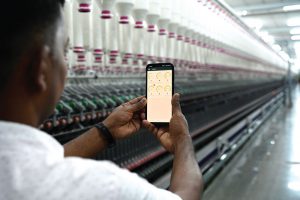
TW: AI is the big buzzword of 2025. What is the reality of AI in the products/technologies Rieter is focused on?
Oetterli: AI helps to minimize energy consumption and optimize raw material yield. Rieter is incorporating AI into existing machinery. A case in point is Rieter’s card C 81, which features intelligent sensors that set the carding gap to the ideal size and monitor contaminant content in real-time.
TW: With many textile manufacturers raising concerns about climate change, how is Rieter helping customers close the loop?
Oetterli: Rieter uses its technology expertise to offer a complete recycling spinning system for both ring and rotor spinning lines. This enables customers to spin fiber from used garments and textile waste into yarn, thus helping to close the loop in textiles. One highlight is Rieter’s recycling toolbox: It makes spinning fine ring yarns with high quality and a high share of recycled fibers possible. Each of the three tools in the toolbox contributes to another yarn quality criterion. Pre-carding cleans the recycled fibers perfectly before they enter the spinning process, combing removes very short fibers and compacting adds the finishing touch to the yarn.
The editors of TW appreciate Thomas Oetterli’s candor and willingness to share Rieter’s vision. The take-away — according to Oetterli, is to look for “automated, digital, and smart” to lead developments in this essential sector.
2025 Quarterly Issue III

